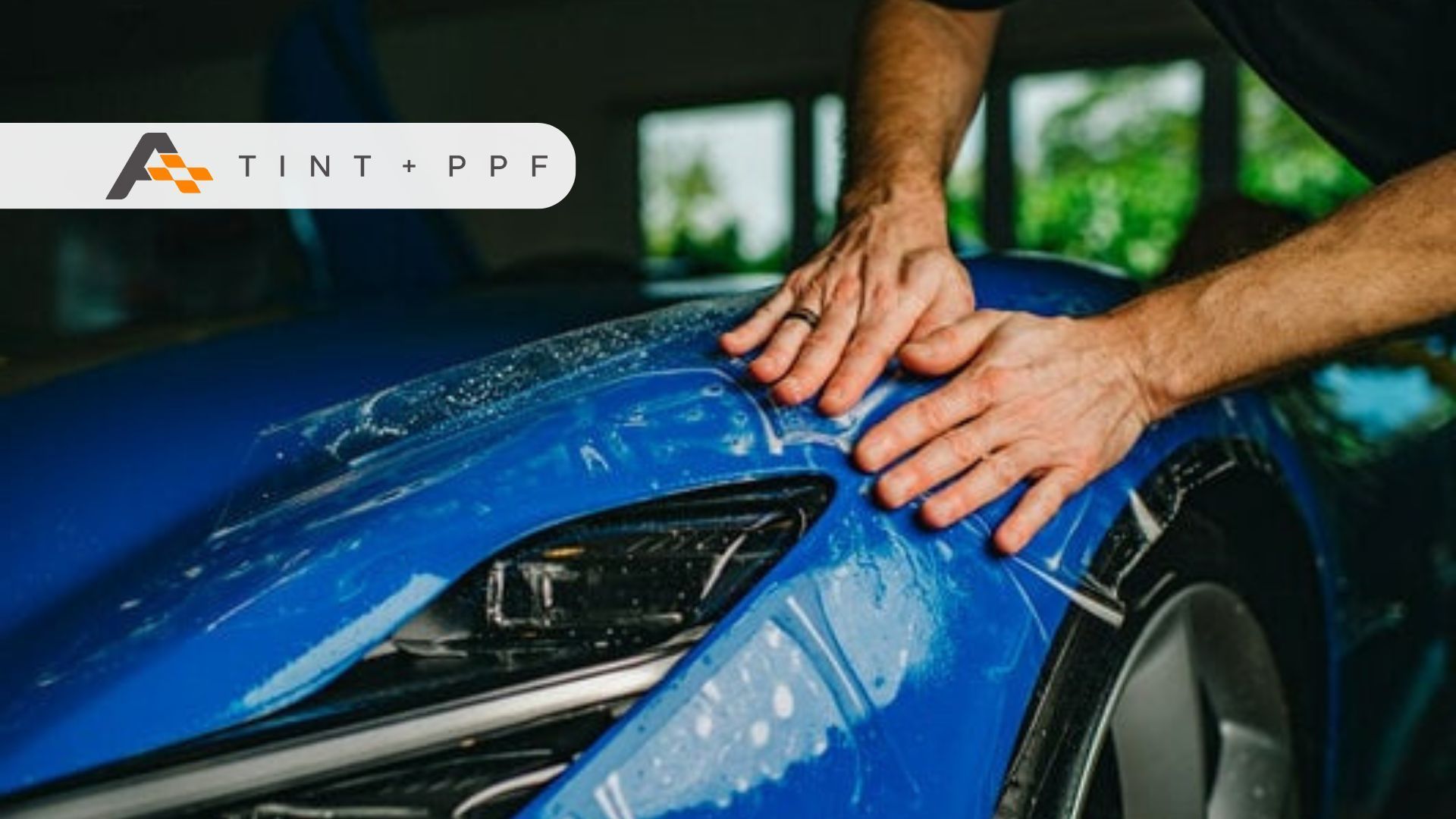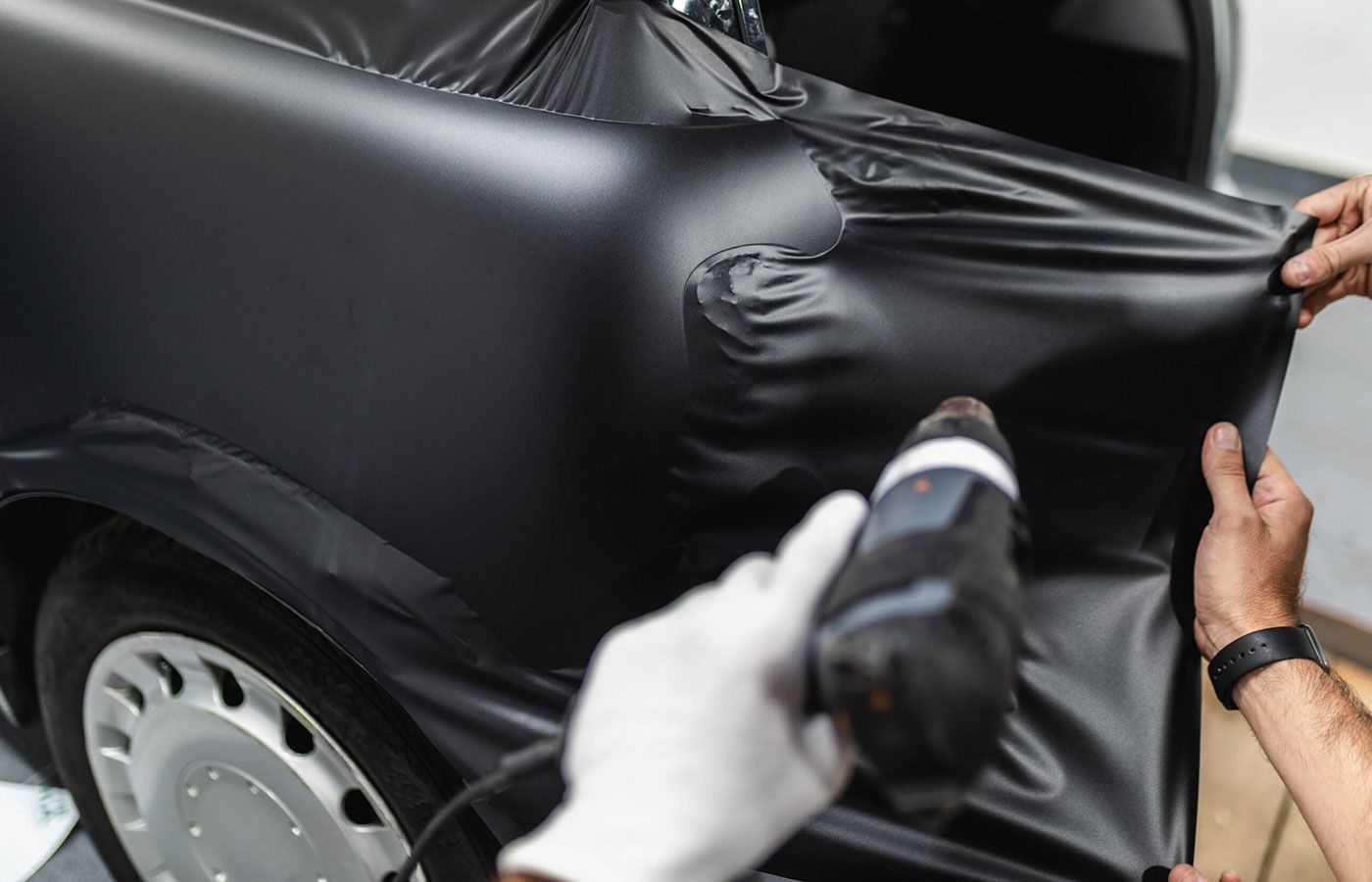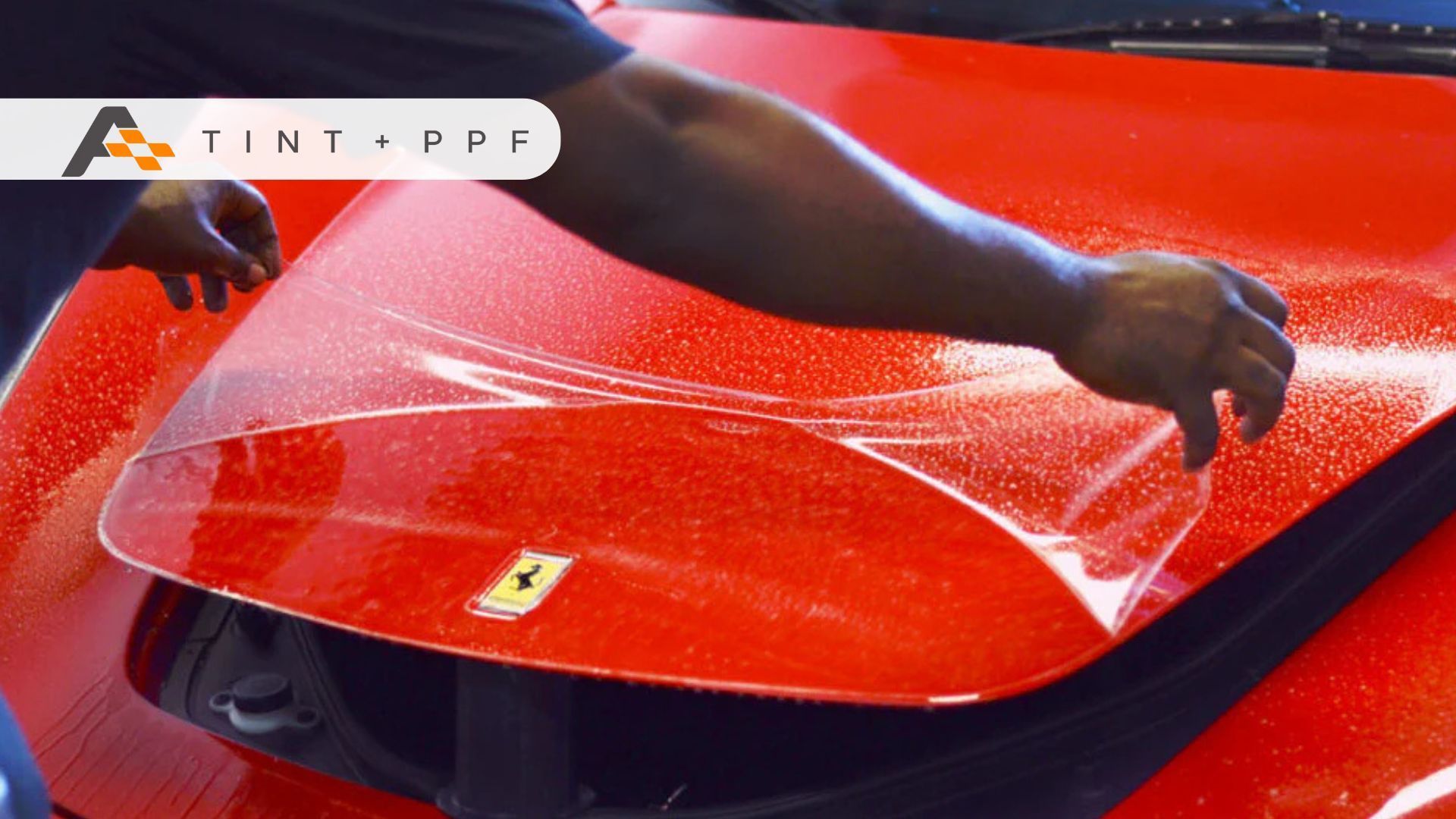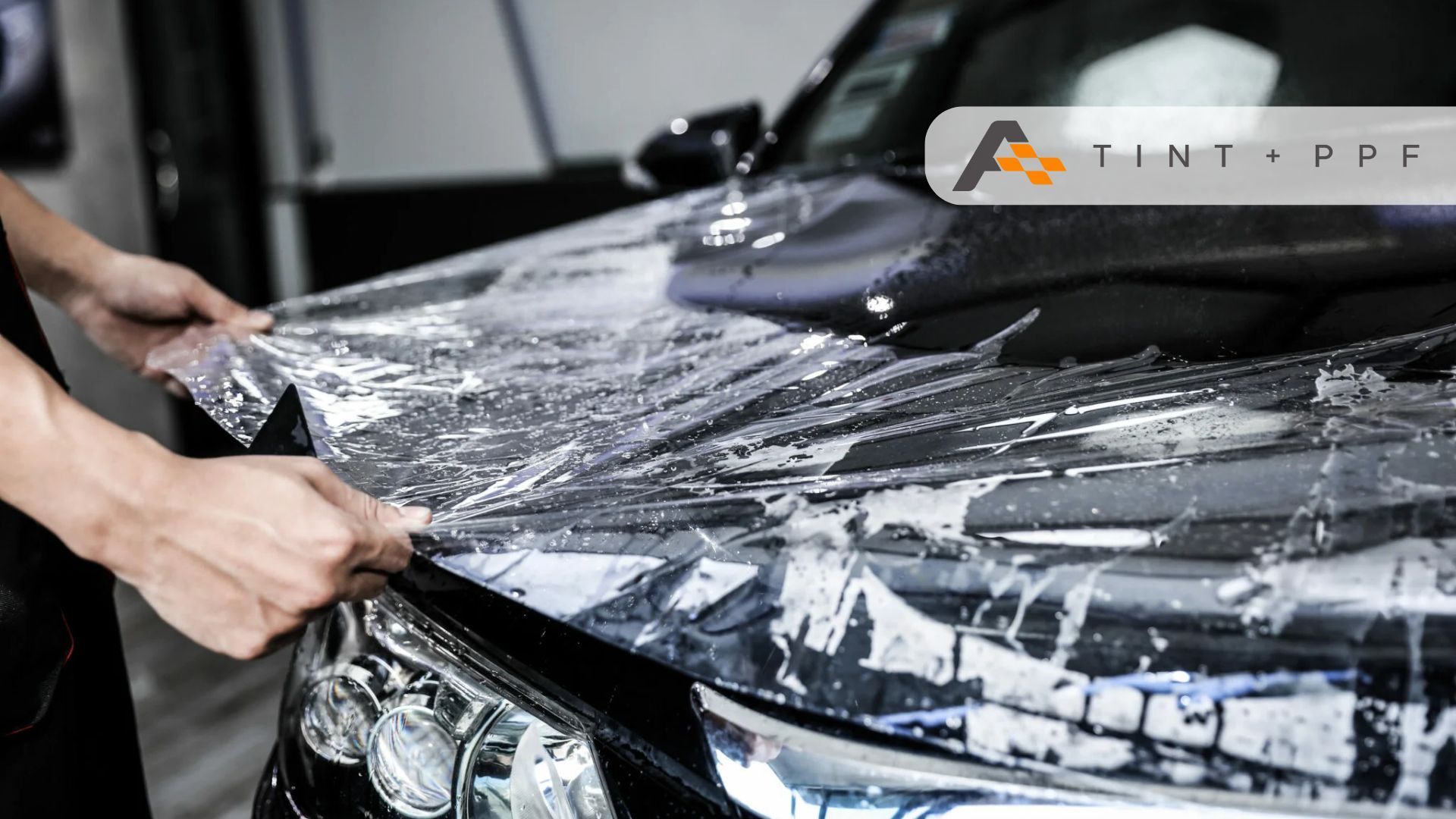How to Maintain Paint Protection Film in Forest Hill, MD: Tips for Longevity and Shine
At A-Plus Tint, we work with a lot of drivers in Forest Hill who invest in paint protection film (PPF) to keep their cars looking sharp and well-protected. But as much as PPF shields your vehicle from damage, it still needs some attention to perform its best—especially around here in Maryland.
Between the daily grind on Route 24 and Route 1, the rock salt from our unpredictable winters, and the bumper-to-bumper traffic headed into Bel Air or Abingdon, your car goes through a lot. And let’s not even get started on the bird droppings and tree sap if you ever park under the wrong spot at Annie’s Playground.
That’s why
maintaining paint protection film isn’t just about vanity—it’s about protecting your investment long-term. In this guide, we’ll walk you through the maintenance tips we actually follow on our own cars. These aren’t just general pointers; they’re local-tested, expert-approved ways to make sure your PPF holds up against Forest Hill’s roads, seasons, and surprises.
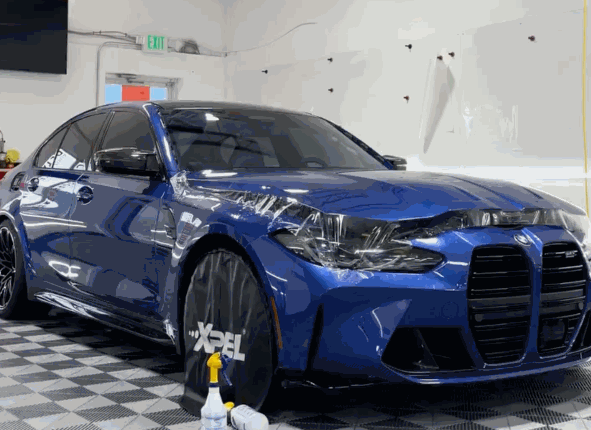
Understanding the Climate: What PPF Faces in Harford County
If you’ve lived in Harford County for more than one season, you already know how unpredictable the weather can be. And that’s exactly what makes maintaining paint protection film so important here.
Here’s what your PPF goes up against in Forest Hill and surrounding areas:
- Winter Salt & Slush: Once the snow hits, the salt trucks start rolling. That’s great for the roads—but brutal on your vehicle. Salt residue can build up along rocker panels and wheel wells, potentially weakening the edges of your PPF over time if not washed off properly.
- Tree Sap in Suburban Areas: Neighborhoods like Abingdon and Fountain Green are beautiful but lined with trees. That shade often comes with a price: sticky sap that can sit on your film and become harder to remove the longer it bakes in the sun.
- UV Exposure in the Summer: Maryland summers bring more than heat—they bring sun damage. UV rays can wear down PPF if it’s not well-maintained, especially for cars parked outside all day near Rock Spring or Churchville.
- Rural Roads and Gravel: Weekend trips to Rocks State Park? Sounds like fun—until the gravel driveway scrapes your rocker panels. Luckily, PPF has your back, but it’ll need regular care to stay effective.
Long story short: Harford County isn’t gentle on your car. But with a good maintenance routine, your paint protection film can handle it all.
Weekly and Monthly Maintenance Tips
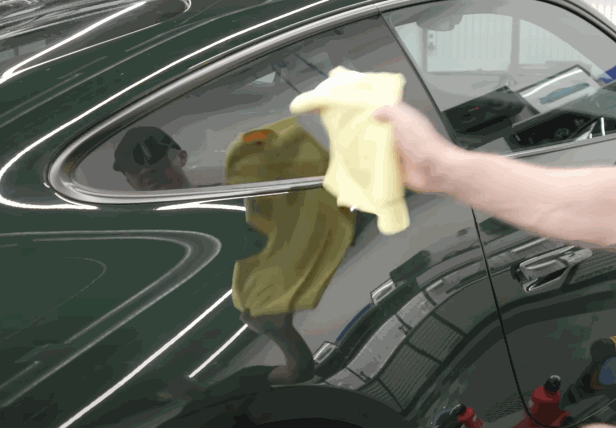
One of the most common questions we get at A-Plus Tint is: “How often should I wash my car with PPF?” The answer depends on how you drive and where you park, but we generally recommend the following:
1. Weekly or Bi-Weekly Hand Washing
- Use
pH-neutral car soap—this keeps your film from dulling or staining over time.
- Always use a
clean microfiber wash mitt and a
grit guard in your bucket to reduce swirl marks.
- Avoid
automatic car washes with brushes—they’re a fast way to ruin both your film and your paint. If you must use a touchless wash, make sure it doesn’t use harsh chemicals.
2. Monthly Surface Check
- Run your hand lightly over the PPF after washing. If you feel rough spots or see discoloration, it might be time for a deeper clean or even a professional inspection.
- Look at the film’s edges. If you notice any lifting or bubbling, give us a call before it gets worse.
3. Drying Matters More Than You Think
- Use
dedicated microfiber drying towels or a soft air blower.
- Never let your car air-dry in direct sun—water spots are one thing, but mineral buildup can slowly etch into your film if ignored.
- Dry panel by panel, especially in summer months when the heat can bake water into the surface quickly.
Seasonal Checks and Special Care in Winter
Winters in Forest Hill are no joke. Between the freezing temperatures, snowstorms, and road salt, your paint protection film goes through a serious stress test every year. Here’s how we recommend staying ahead of winter damage:
Winter Threats to Watch Out For
- Road Salt and Slush: Salt buildup can cling to the lower sections of your car, like the front bumper and rocker panels. Left unchecked, it can seep under the edges of your PPF, causing early lifting or staining.
- Freezing Temps: If water gets trapped under the edges of your film and freezes, it can weaken the adhesive over time—especially around curved panels and wheel arches.
- Snow Brushes and Ice Scrapers: Be extra careful when clearing snow. Hard plastic scrapers or aggressive brushes can scuff or scratch your film.
Pre-Winter Prep Tips
- Wash More Often: In winter, we recommend washing every 1–2 weeks—especially after a snowstorm or salt treatment on the roads.
- Consider Ceramic Coating Over PPF: Adding ceramic coating on top of your film gives it an extra hydrophobic layer, making snow and grime easier to remove. It’s optional—but something many of our local customers in
Forest Hill choose.
- Use Warm Water (Safely): When washing at home, never use hot water on frozen panels, but warm water can help melt away icy residue more gently.
Spring Check-Up
When the weather breaks, do a full inspection:
- Look for
yellowing,
peeling edges, or
staining—especially near the lower half of your vehicle.
- Feel for roughness or hazy patches—this might be leftover salt or early signs of oxidation.
What to Avoid: Habits That Damage Paint Protection Film
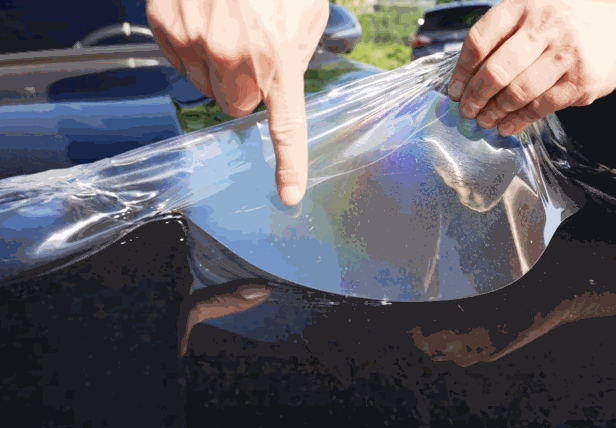
Even the best-installed PPF won’t last if you’re unknowingly doing damage during daily use. Here are some common habits that can cut your film’s life short:
- ❌
Automatic Car Washes with Brushes
These can cause swirl marks, edge lifting, or fine scratches. Always choose touchless—or better yet, wash by hand. - ❌
Pressure Washers Too Close
Holding a pressure washer too close to the edges can lift the film. Stay at least 12 inches away, and avoid direct streams on the seams. - ❌
Harsh Chemicals
Degreasers or acidic cleaners can discolor the film and weaken its protective qualities. Stick to pH-neutral products only.
When to Get a Professional Inspection
Your car’s PPF is doing a lot of invisible work—but that doesn’t mean it’s invincible. If something feels off, it might be time to call in the pros.
Signs Your PPF Needs Expert Eyes
- You notice
fading or dullness
in certain areas
- The film is
yellowing
or has
dark streaks
- Edges are
lifting,
bubbling, or
curling
- Water stops beading like it used to
What We Do at A-Plus Tint
When customers in Forest Hill bring their vehicles to us, here’s how we help:
- Perform a
visual and tactile inspection
panel by panel
- Recommend a
spot repair, reapplication, or ceramic top-up if needed
- Offer honest advice—no unnecessary fixes
Why trust a local shop like ours? Because we know how Maryland weather works, we’ve installed film on hundreds of vehicles across Harford County, and we actually drive these same roads ourselves.
Final Thoughts: Local Knowledge = Better Car Protection
If you’ve made the investment in paint protection film, we’re here to help you get the most from it. Whether you commute daily down Route 24 or park under a cherry tree in your Forest Hill driveway, your car faces local challenges that generic advice just doesn’t cover.
That’s why maintaining paint protection film is about more than a one-size-fits-all routine—it’s about tailoring your care based on where you drive, park, and live.
At A-Plus Tint, we’re not just installers—we’re fellow Maryland drivers who believe in protecting what we drive. If you ever have questions, want us to take a look, or just need help choosing the right wash product, don’t hesitate to reach out. We’re here to help your car look its best for years to come.
A-Plus Tint & PPF
5.0 ⭐⭐⭐⭐⭐ 828 Google reviews
Window tinting service in Maryland




